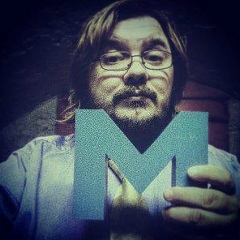Изобретатель современной системы нотной записи – бенедиктинский монах Гвидо Аретинский (Гвидо д'Ареццо) (990-1050).
Во время выступления хора, Гвидо для указания нот использовал свою левую руку, сгибая суставы пальцев он указывал, какую ноту брать в то или иное время.
В пследствии Гвидо Ареттинский начал отмечать звуки нотами (от латинского слова nota – знак). Ноты, заштрихованные квадратики, размещались на нотном стане, состоящем из четырех параллельных линий. Сейчас этих линий пять, и ноты изображают кружочками, но принцип, введенный Гвидо, остался без изменений. Более высокие ноты изображаются на более высокой линейке. Нот семь, они образуют октаву.
Каждой из семи нот октавы Гвидо дал название: ut, re, mi, fa, sol, la, si.
Это – первые слоги гимна св. Иоанну.
Каждая строка этого гимна поется на тон выше предыдущей.
UT queant laxis REsonare fibris
MIra gestorum FAmuli tuorum,
SOLve polluti
LAbii reatum,
Sancte Ioannes.
(В переводе с латинского:
Чтобы слуги твои голосами своими смогли воспеть чудные деяния твои,
очисти грех с наших опороченных уст, о, Святой Иоанн»)
Названия всех нот, кроме первой, заканчиваются на гласный звук, их удобно петь. Слог ut – закрытый и пропеть его подобно прочим невозможно. Поэтому название первой ноты октавы, ut, в шестнадцатом веке заменили на do (скорее всего, от латинского слова Dominus – Господь).
Современная интерпретация названий нот выглядит так:
Do – Dominus – Господь;
Re – rerum – материя;
Mi – miraculum – чудо;
Fa – familias рlanetarium – семья планет, т.е. солнечная система;
Sol – solis – Солнце;
La – lactea via – Млечный путь;
Si – siderae – небеса.
Во время выступления хора, Гвидо для указания нот использовал свою левую руку, сгибая суставы пальцев он указывал, какую ноту брать в то или иное время.
В пследствии Гвидо Ареттинский начал отмечать звуки нотами (от латинского слова nota – знак). Ноты, заштрихованные квадратики, размещались на нотном стане, состоящем из четырех параллельных линий. Сейчас этих линий пять, и ноты изображают кружочками, но принцип, введенный Гвидо, остался без изменений. Более высокие ноты изображаются на более высокой линейке. Нот семь, они образуют октаву.
Каждой из семи нот октавы Гвидо дал название: ut, re, mi, fa, sol, la, si.
Это – первые слоги гимна св. Иоанну.
Каждая строка этого гимна поется на тон выше предыдущей.
UT queant laxis REsonare fibris
MIra gestorum FAmuli tuorum,
SOLve polluti
LAbii reatum,
Sancte Ioannes.
(В переводе с латинского:
Чтобы слуги твои голосами своими смогли воспеть чудные деяния твои,
очисти грех с наших опороченных уст, о, Святой Иоанн»)
Названия всех нот, кроме первой, заканчиваются на гласный звук, их удобно петь. Слог ut – закрытый и пропеть его подобно прочим невозможно. Поэтому название первой ноты октавы, ut, в шестнадцатом веке заменили на do (скорее всего, от латинского слова Dominus – Господь).
Современная интерпретация названий нот выглядит так:
Do – Dominus – Господь;
Re – rerum – материя;
Mi – miraculum – чудо;
Fa – familias рlanetarium – семья планет, т.е. солнечная система;
Sol – solis – Солнце;
La – lactea via – Млечный путь;
Si – siderae – небеса.
The inventor of the modern music notation system is the Benedictine monk Guido Aretinsky (Guido d'Arezzo) (990-1050).
During the choir's performance, Guido used his left hand to indicate notes, bending the joints of his fingers he indicated which note to take at one time or another.
Subsequently, Guido Arettinsky began to note sounds with notes (from the Latin word nota - sign). The notes, hatched squares, were placed on a stave consisting of four parallel lines. Now there are five of these lines, and the notes are represented by circles, but the principle introduced by Guido has remained unchanged. Higher notes are displayed on a higher ruler. Notes seven, they form an octave.
Guido gave each of the seven notes of the octave: ut, re, mi, fa, sol, la, si.
These are the first syllables of the hymn of St. To John.
Each line of this hymn is sung a tone higher than the previous one.
UT queant laxis REsonare fibris
MIra gestorum FAmuli tuorum,
SOLve polluti
LAbii reatum,
Sancte Ioannes.
(Translated from Latin:
So that your servants with your voices can sing your wonderful deeds,
cleanse sin from our defiled lips, oh St. John ”)
The names of all notes except the first end with a vowel sound, it is convenient to sing them. The syllable ut is closed and it is impossible to sing it like others. Therefore, the name of the first octave note, ut, in the sixteenth century was replaced by do (most likely, from the Latin word Dominus - Lord).
A modern interpretation of note names looks like this:
Do - Dominus - the Lord;
Re - rerum - matter;
Mi - miraculum - a miracle;
Fa - familias planetarium - a family of planets, i.e. solar system;
Sol - solis - the Sun;
La - lactea via - Milky Way;
Si - siderae - heaven.
During the choir's performance, Guido used his left hand to indicate notes, bending the joints of his fingers he indicated which note to take at one time or another.
Subsequently, Guido Arettinsky began to note sounds with notes (from the Latin word nota - sign). The notes, hatched squares, were placed on a stave consisting of four parallel lines. Now there are five of these lines, and the notes are represented by circles, but the principle introduced by Guido has remained unchanged. Higher notes are displayed on a higher ruler. Notes seven, they form an octave.
Guido gave each of the seven notes of the octave: ut, re, mi, fa, sol, la, si.
These are the first syllables of the hymn of St. To John.
Each line of this hymn is sung a tone higher than the previous one.
UT queant laxis REsonare fibris
MIra gestorum FAmuli tuorum,
SOLve polluti
LAbii reatum,
Sancte Ioannes.
(Translated from Latin:
So that your servants with your voices can sing your wonderful deeds,
cleanse sin from our defiled lips, oh St. John ”)
The names of all notes except the first end with a vowel sound, it is convenient to sing them. The syllable ut is closed and it is impossible to sing it like others. Therefore, the name of the first octave note, ut, in the sixteenth century was replaced by do (most likely, from the Latin word Dominus - Lord).
A modern interpretation of note names looks like this:
Do - Dominus - the Lord;
Re - rerum - matter;
Mi - miraculum - a miracle;
Fa - familias planetarium - a family of planets, i.e. solar system;
Sol - solis - the Sun;
La - lactea via - Milky Way;
Si - siderae - heaven.


У записи 5 лайков,
1 репостов.
1 репостов.
Эту запись оставил(а) на своей стене Галина Сергеевна
























